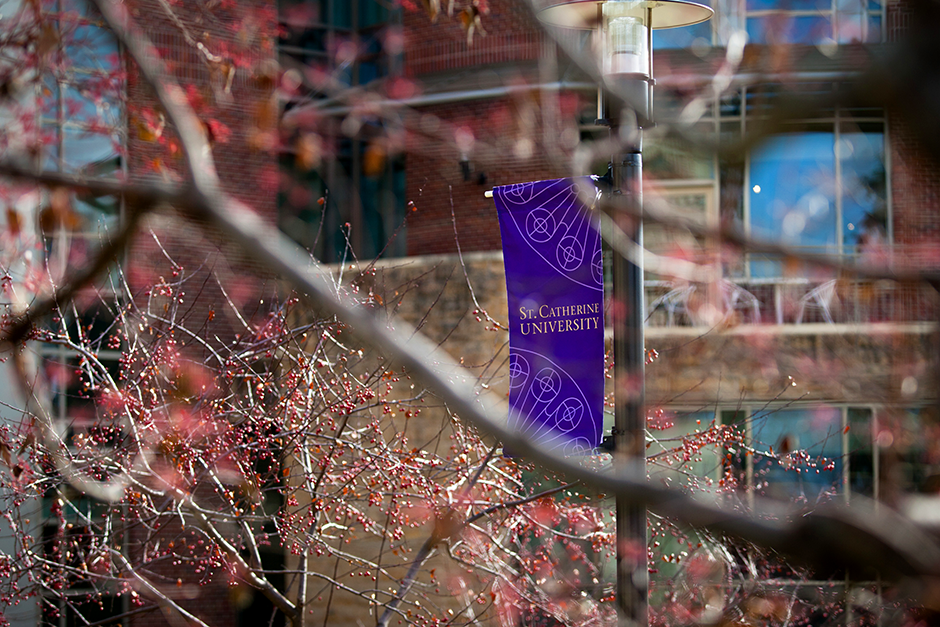By By Alyssa L. Olson and Susi Keefe,Rita Kovtun
Copyright minnpost

“I ended up in the ER because I passed out walking across campus. I hadn’t eaten in two days.”
These words were shared with me during an interview conducted in collaboration with my co-author, Susi Keefe, the Cross Campus Food Access Coalition and a graduate public health research course at St. Catherine University.
The student attends a Twin Cities private college — a place where it’s often assumed students are sheltered from hunger. In reality, many private college students struggle with food insecurity. A cross-campus survey of more than 1,300 students at St. Catherine, Augsburg and Hamline universities revealed that 54% reported going hungry.
In our spring 2025 qualitative research, food insecurity was evident on campus. Another student shared, “I was too hungry to focus during a 30-minute lecture.” Another recalled, “My stomach hurt so bad I had to leave class. I couldn’t concentrate because [my stomach] was growling so loud.”
Students frame hunger as an unfortunately inevitable part of the “college experience.” One explained, “It’s just how it is in college. Everyone’s living off ramen.” Hunger is not a rite of passage. Skipped meals and inadequate nutrition are barriers to education, undermining the purpose of college: to learn.
September is National Hunger Awareness Month. As students return to campus, hunger isn’t hypothetical; it is a lived reality. While these three campuses are private institutions, they serve majority Pell Grant recipients, first-generation college students and students from BIPOC communities. They are home to immigrants, first-generation Americans, LGBTQ+ students, caregivers, and working adults balancing coursework with rent, child care and rising grocery costs. Any one of these identities increases the risk of food insecurity, and for students with intersecting identities, the risks are heightened.
Each campus has a food pantry, but barriers exist. At St. Catherine, the pantry is only open twice a month, with limited hours, making it inaccessible for many. One participant explained, “They’re open 2 p.m. to 5 p.m. If you have classes or work, you can’t get there.” Other food resources across the three campuses have similar barriers; cafeterias have limited hours, often closing during breaks or before students observing Ramadan can break their fast, leaving few options when they need them most.
Many students are required to purchase expensive meal plans that don’t meet their needs. For some, the food offered doesn’t align with dietary, religious or cultural requirements. For others, the cost itself adds another burden. Instead of easing hunger, meal plans can deepen it, heightening feelings of exclusion and shame. One student said, “Everyone else just taps their card and gets food. I have to ask for help, and it makes me feel so ashamed.”
I began this research as part of a class and am continuing it with fellow students and Dr. Keefe because it holds personal meaning for us. During the interviews, we heard our own stories echoed back. As public health students, we understand that hunger is not a matter of individual failure, but rather a failure of systems to support students. Institutions are not to blame for the financial circumstances students bring with them, but they are responsible for policies that either ease or worsen their struggles.
Universities must do better. Food access must be treated as essential to learning, not an optional add-on. Research shows that access to cooking spaces and shared meal areas can reduce insecurity and stigma, especially when colleges normalize free food as part of student life. Universities can expand pantry hours, rethink meal plans, offer culturally relevant food, help students enroll in SNAP and invest in shared kitchens. As universities work to recruit an increasingly diverse student body, they need to be working with the government to ensure students’ basic needs are met.
Hunger is a public health crisis that requires immediate systemic intervention. If Minnesota’s private universities want to prepare the next generation of leaders, they must make ending student hunger a central part of their responsibility and mission. As one student said, “I wish the universities would put more time and resources and money into these aspects, because if we’re not getting our basic needs met, how are we able to properly function as students?”
Alyssa L. Olson is a graduate student studying public health at St. Catherine University in St. Paul. Susi Keefe, Ph.D., is associate director for community engaged scholarship in the Center for Community Engaged Learning at the University of Minnesota.
An Aug. 12 MinnPost commentary also explored food insecurity on college campuses.